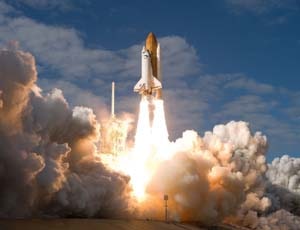English Documentary on Space Rockets with Transcript, illustrated flashcards and podcast to improve your reading and listening comprehension alongside vocabulary for IELTS and TOEFL Source of documentary: National Geographic YouTube Channel https://www.youtube.com/watch?v=1yBwWLunlOM&t=1s Rockets are formidable The ground begins to tremble. Massive engines roar to life, billowing clouds of exhaust, and then blinding pillar of fire. A mighty voyager leaves the Earth behind to explore the vast universe among the stars. Launching a rocket into space is one of humankind's crowning achievements. Although they come in many different shapes and sizes, all rockets are propelled by engines that produce thrust. Rockets mechanism The ...
Home » English Documentaries with Transcript » English Documentary on Space Rockets with Transcript

English Documentary on Space Rockets with Transcript
Updated: by Dr. Mohammad Hossein Hariri Asl
Time to Read: 5 minutes | 415 Views | 4 Comments on English Documentary on Space Rockets with Transcript
Share This Post
About the Author
Dr. Mohammad Hossein Hariri Asl is an English and Persian instructor, educator, researcher, inventor, published author, blogger, SEO expert, website developer, entrepreneur, and the creator of LELB Society. He's got a PhD in TEFL (Teaching English as a Foreign Language).
Number of Posts: 4226



Actually when I was a kid I really liked rokets and liked to ride one of them and go to the moon and get money of nasa and work for him.
NASA is not a person. It’s a company. So, you should say: work for it. By the way, I wonder if you’ve changed your mind about becoming an astronaut.
The humans’ improvement in technology and rocketry in such a short amount of time is remarkable and yet concerning. I wonder where are we gonna be in the next 100 years in space knowledge and technology.
Feedback
* The humans’ improvement = Human’s advancement
* I wonder where are we gonna be = I wonder where we will be (the structure of noun clause) + be going to is used to show clear intentions, while in your sentence, we’re not sure what will happen.